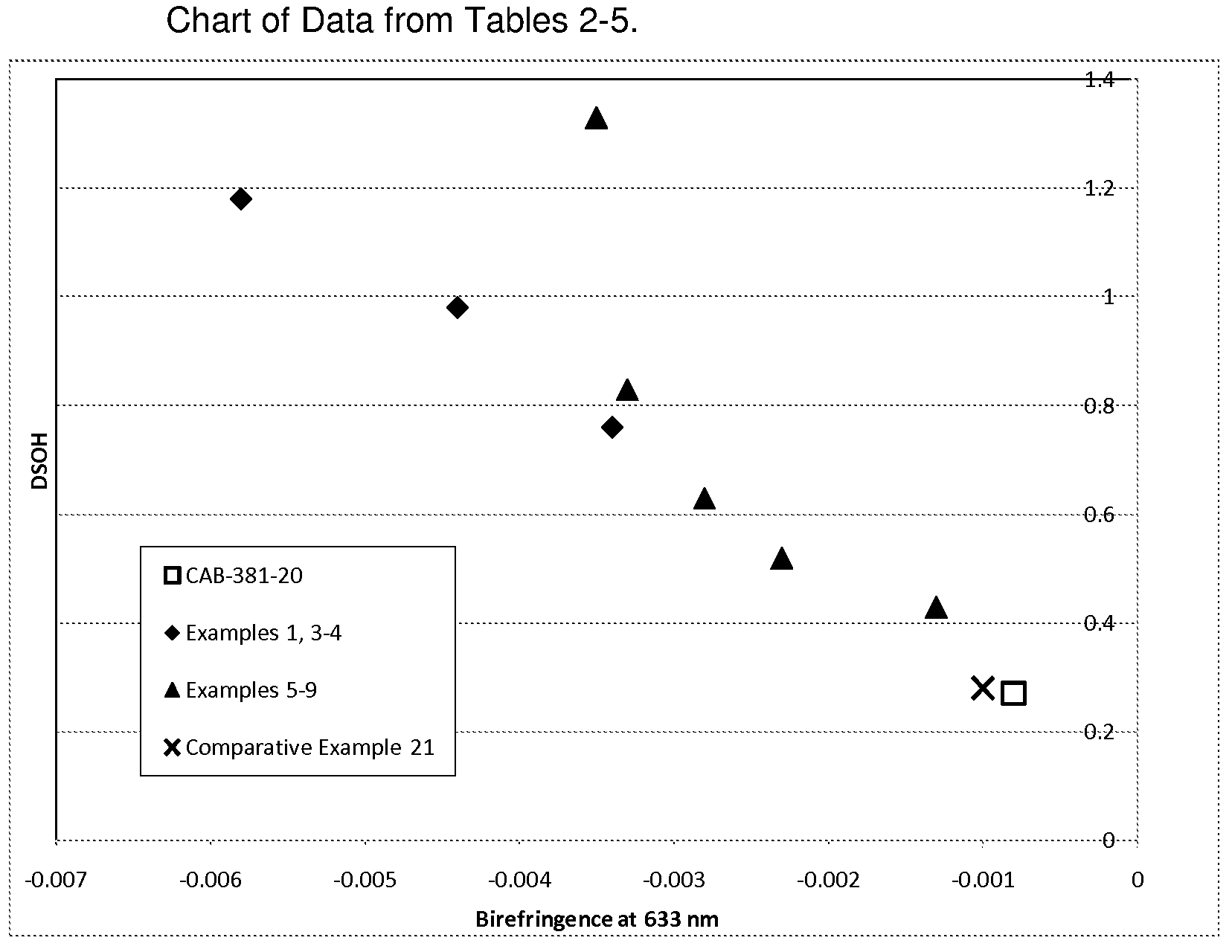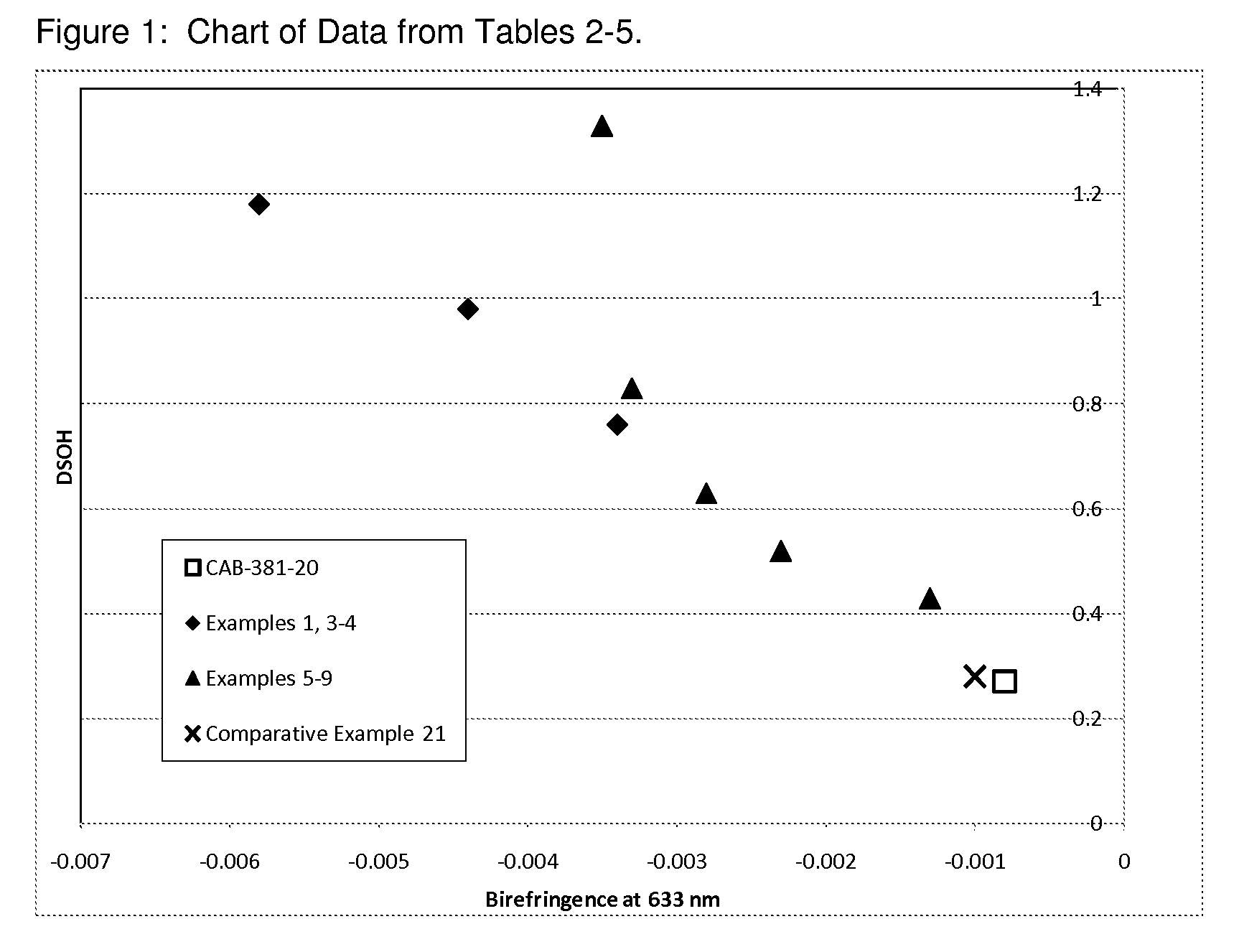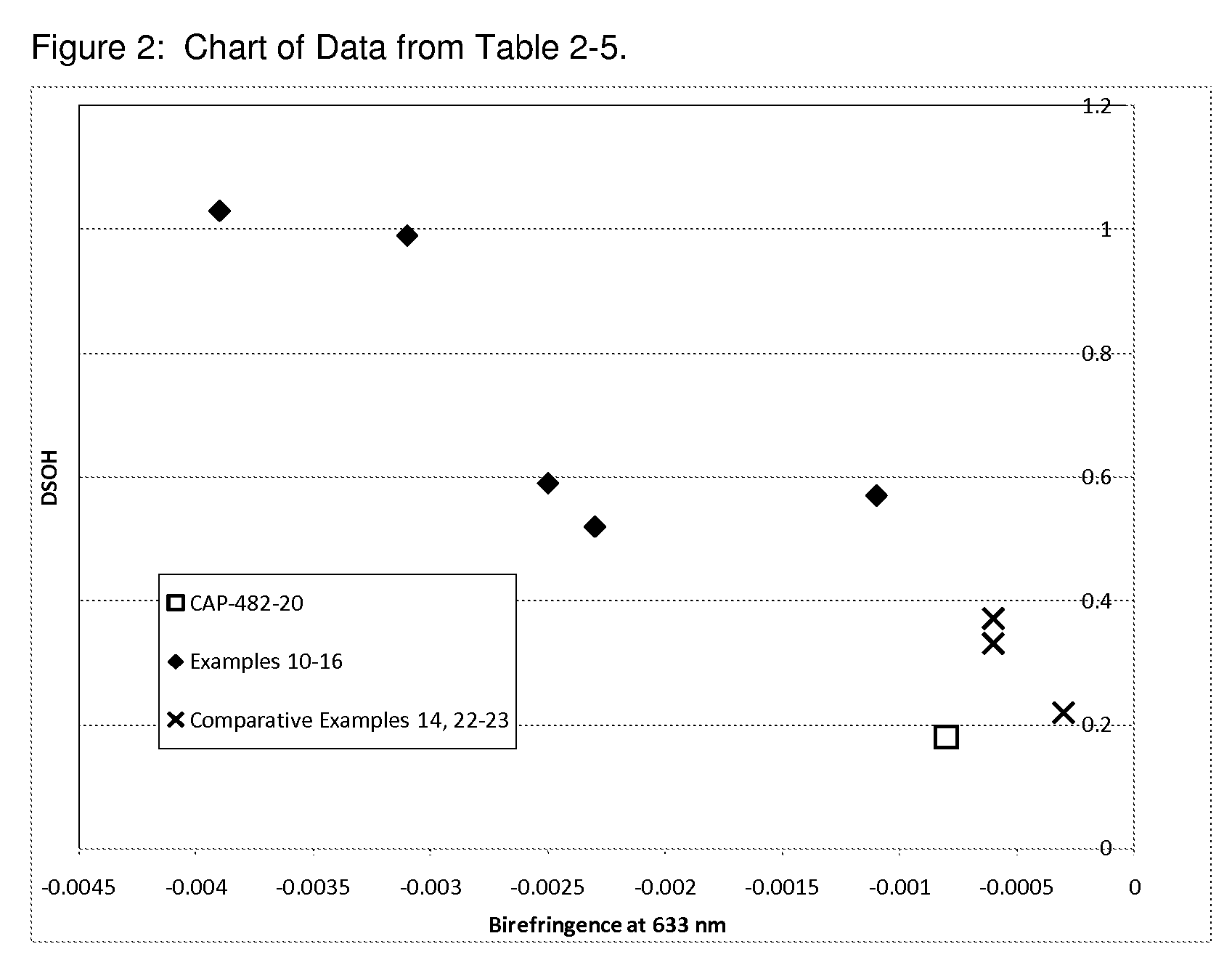Cellulose Esters with High Hyrdoxyl Content and Their Use in Liquid Crystal Displays
a technology of cellulose esters and hyrdoxyl content, which is applied in the direction of cellulosic plastic layered products, instruments, polarising elements, etc., can solve the problems of film flaws, low compensation level of tac, and relatively complicated electronic devices of liquid crystal displays, so as to simplify complicated systems and eliminate the layer of lcds
- Summary
- Abstract
- Description
- Claims
- Application Information
AI Technical Summary
Benefits of technology
Problems solved by technology
Method used
Image
Examples
examples
Preparation of High DSOH Cellulose Acetate Butyrates and Cellulose Acetate Propionates
examples 13-14
[0257]A CAP dope was prepared by adding 250 grams (about 319.67 g / mol, 0.78 mol, based on anhydroglucose units, Eastman Chemical Company, Lot # BP-04951-B) of CAP-482-20, 1226.6 grams (20.43 mol) of acetic acid to a 5000-mL 3-necked round bottomed flask equipped with an overhead stirrer and a thermocouple connected to a J-Kem temperature controller and stirring the mixture at 55° C. until the solid dissolves into a clear dope or a slightly cloudy, viscous mixture. The dope was allowed to cool to room temperature with stirring overnight. The dope was heated to 70° C. and a catalyst solution comprised of 253.6 grams (14.07 mol) of demineralized water and 3.775 grams (0.038 mol) of sulfuric acid was added to the CAP dope. A hydrolysis solution comprising 695 grams (11.57 mol) of acetic acid, 695 grams (38.61 mol) of demineralized water was added to an addition funnel and then was added dropwise to the CAP dope / catalyst solution mixture. Care was taken to add the water solution at a slo...
examples 15-16
[0260]A CAP dope was prepared by adding 250 grams (about 319.67 g / mol, 0.78 mol, based on anhydroglucose units, Eastman Chemical Company, Lot # BP-04951-B) of CAP-482-20, 1226.6 grams (13.92 mol) of butyric acid to a 5000-mL 3-necked round bottomed flask equipped with an overhead stirrer and a thermocouple connected to a J-Kem temperature controller and stirring the mixture at 55° C. until the solid dissolved into a clear dope or a slightly cloudy, viscous mixture. The dope was allowed to cool to room temperature with stirring overnight. The dope was heated to 70° C. and a catalyst solution comprised of 96.4 grams of butyric acid (1.09 mol) and 3.775 grams (0.038 mol) of sulfuric acid was added to the CAP dope. A hydrolysis solution comprising 1200 grams (19.98 mol) of acetic acid, 1200 grams (66.59 mol) of demineralized water was added to an addition funnel and then was added dropwise to the CAP dope / catalyst solution mixture. Care was taken to add the water solution at a slow enou...
PUM
| Property | Measurement | Unit |
|---|---|---|
| Temperature | aaaaa | aaaaa |
| Temperature | aaaaa | aaaaa |
| Percent by mass | aaaaa | aaaaa |
Abstract
Description
Claims
Application Information
 Login to View More
Login to View More - R&D
- Intellectual Property
- Life Sciences
- Materials
- Tech Scout
- Unparalleled Data Quality
- Higher Quality Content
- 60% Fewer Hallucinations
Browse by: Latest US Patents, China's latest patents, Technical Efficacy Thesaurus, Application Domain, Technology Topic, Popular Technical Reports.
© 2025 PatSnap. All rights reserved.Legal|Privacy policy|Modern Slavery Act Transparency Statement|Sitemap|About US| Contact US: help@patsnap.com



